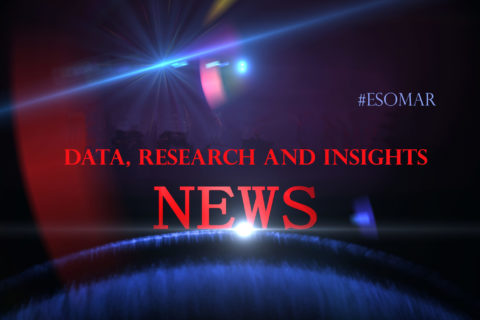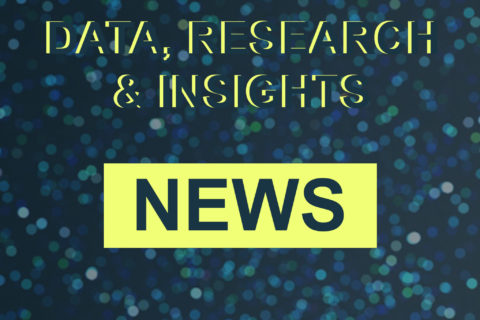By Massimo Cealti
My personal sensory surprises (vodka before 10AM and fun-learning scientific paradigms) at the 2017 ESOMAR Sensory event in Amsterdam
Niels Schillewert, ESOMAR President, is giving us the latest industry news: the research industry is worth 43 billion USD a year, making it an industry as big as the recorded music one. A pleasant surprise for a humble, specialized and a bit hidden industry.
Niels brings me to think about ESOMAR and Sensory. There are other specialized events that most sensory scientists attend (me included), so where does ESOMAR fit in with Sensory? I believe Sensory and Consumer are getting closer: increased effectiveness, cost savings and synergies in running both simultaneously are always welcome.
The program of today promises something a bit different from the classical sensory perspective, which is built over the sensory lab and fieldwork related issues, applied mathematics and analysis algorithms, and of course product, product, and more product. Instead Brand, Context and Multisensory experiences are on the menu. Intriguing…
Sam Bompas, the keynote speaker, comes on, and first and foremost I wonder if I need to “up” my dressing style. He’s dressed like a fashionista going to the Brit Awards. A striking difference from the usual business casual style -by the way I have never truly learned the meaning of business casual – … generational differences quite likely. Sam brings us back to the roots of Sensory, we are not thinking beings who feel, we are feeling beings who think. He offers an unforgettable sensory experience: a shot of “lightning infused” vodka before 10AM! I decide to try and think “should not tell my wife about this” and my taste buds get literally kidnapped! 30 minutes of long lasting hyperbolic aftertaste, personally one of the strongest and longest taste experiences. I am under the impression the audience suddenly looks more laid back. He literally kick-started the day!
Jonathan Rason reminds us about how Brands can play a social role by proving how sensory can drastically improve food palatability for patients suffering from specific medical conditions. The positive social dimension of sensory and this feel-good element also adds positively to the start of the day.
Tom Pursey follows suit describing the Tate Gallery Sensorium and we collectively take off to the world of Art. If you think about it, Art is the expression of one sense in a sublime way: you look at a painting, listen to music, touch a beautifully sculpted object, eat delicious food etc. Tom talked about enhancing the experience of Art by “embedding” multisensory design in it. This to me looks like digital at the service of sense. Maybe young people will be sending soon multisensory selfies instead of the traditional “V” signs because all of our senses will have been somehow “digitalized”. The next step will be Multisensory Virtual Reality/Augmented Reality: I tried a selfie only once, I will be keen to try.
My own presentation is about context effects and how they can potentially “take control” of your experiment if not properly managed. Sensory has been dealing with context effects since the onset but there are other disciplines like physics where these are hugely relevant. They are developing the type of mathematics we will need to account for a few of them and I introduced some promising routes in this perspective.
Sjoerd Koornstra also masterfully reminded the audience how context plays a role that should never be forgotten in sensory research as well. He showed the effects of different contexts on results and correctly stated that the choice of the type of context should mainly be geared to the business objectives.
After lunch Cato Hunt from Space Doctors (brilliant name) introduced what to me seem like a new field: Cultural Semiotics applied to sensory. There is still no Sensory Semiotics but I am confident something will spring up soon. Since everything communicates, Cato’s storytelling highlighted the need for congruence in the different sign systems a brand is releasing. It finally smashed for good a paradigm I have seen in action for most of my work life: the elements of a brand’s marketing mix are produced independently and in an un-coordinated way and just assembled before launch like Lego bricks. We live in a world where the quest for sensing and making sense (Cato said “as we sense, we make sense”) is never ending hence I can really see the benefits in her suggestions: semiotic experts should have at least a final look at a brand’s “opus” to check for resonance/dissonance.
Thierry Lescrauwaet gave us a master class on the use of colour. It is amazing how much we know already and how much still remains to be discovered. I like the idea of being at a “cutting edge” event where scientists dare take the first step outside the known frontier of a discipline. And, since I am partly colour blind, I am also curious to know which one is my personal colour profile.
Similarly, Prof. Tim Smits delved the audience into the intangible qualities of multisensory marketing. By focusing simultaneously on all senses successful sensory marketing can “nudge” consumers into a form of PRE-SUASION. One of the first examples of nudging being the fly designed inside gentlemen’s urinals in airports and stations: if you can’t change the motivation, then change the behaviour.
Lise Dreyfuss took us into the very near future by showing how it is possible to run sensory studies adding VR/AR (Virtual/Augmented Reality). As sensory is expanding outside the traditional areas of food/drinks/fragrances into other product categories, VR/AR can be a cost effective solution to give consumer experiences ecological validity but for the moment trading off the replicability of results. She stated that more research is needed to fully grasp the effects of the additional experience created by VR/AR and informed us that the technology whereby social interactions with your own friends without time or space constraints can be added in VR/AR. It “wowed” me as I immediately imagined being able to have a real drink interacting with friends who live 12000km away and I often fondly miss.
Laure Payen continued bringing the audience to “new places” with her speech on the advantages of adding senses (in a broad sense) in qualitative research so as to enrich the consumer experience by immersing them in a sensory stimulation which liberates their thinking and adds hues and cues to the quest for insights.
Finally David Morizet simply captivated the audience by showing how l’Oréal is applying sensory to help create sustainable products. Almost simultaneously to the news of one nation casting clouds over the COP22 climate conference, our beloved industry is silently at work researching how to create effective and pleasurable products which require less water to be used and hence are more environmental friendly.
This must be by no means a unique effort; but rather the tip of an iceberg: Manufacturers are re- formulating their products to do away with chemicals that years of scientific or clinical research have demonstrated not to be totally safe for human or environmental health. Knowing how much Millennials, Gen Z and Alpha care for the environment, David’s presentation opened a world of possibilities: our industry can add value to the lives of consumers today and by making efforts to preserve the environment, also to those of future consumers. Brilliant!
In every part of the day our Master of Ceremonies: Wim Haemaekers was able to find the thin line which united presentations into an innovative but cohesive whole, with delicacy, humour and wit. Endless thanks Wim, you really made it easy for the audience to enjoy the day.
It is my opinion that sensory has been greatly enriched by the new perspectives promoted during the ESOMAR Sensory 2017. The presentations added new dimensions to the already very robust scientific background in which sensory scientists work. No need to remind the reader that sensory sought and applied solutions to context effects in their research practices well before Behavioural Economics showed consumer research that “homo oeconomicus” was as extinct as Neanderthals and interacting with humans carried a non-eliminable burden of cognitive biases.
With the additions (I would say contaminations) of colour, synesthesia, the pleasure principle (and generally emotions), VR/AR and by studying the brand context in which cultural semiotics can decode the communication output, Sensory is offered the opportunity to enrich itself with powerful new tools to continue to serve its fundamental scope: sustainably helping create great products and user experiences.
This contamination is by no means simple since it requires different capabilities and diverse backgrounds, just like the participants to the ESOMAR Sensory 2017 day were coming from all walks of the life sciences. I hope they enjoyed the interesting sessions of the day as much as I did.
Massimo Cealti is an Insights, Strategy and Analytics expert and was also on the Advisory Board for Sensory Forum 2017.


